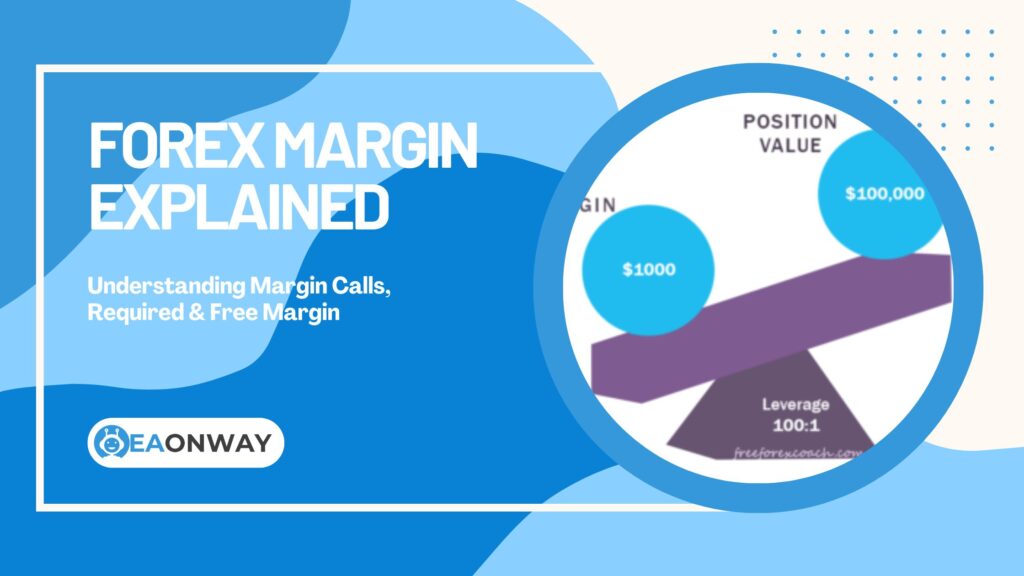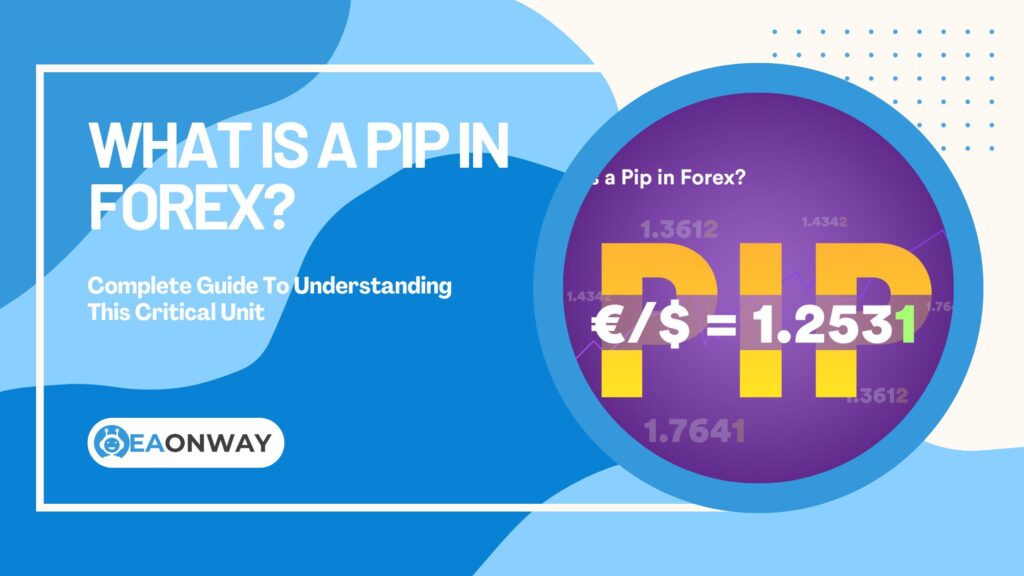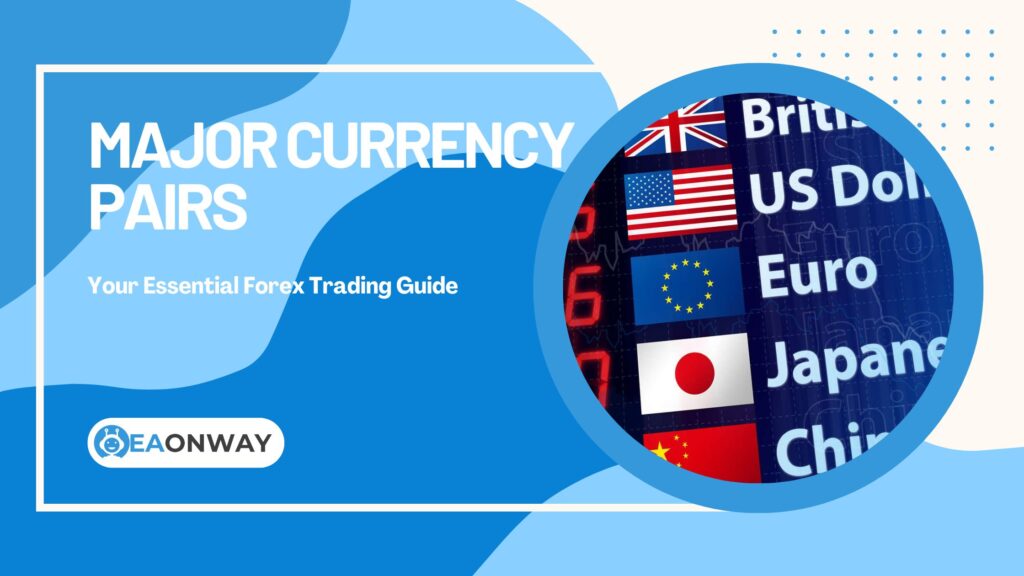Forex Lot Size Explained: Standard, Mini, Micro, Nano Guide
Understanding the forex lot size is absolutely fundamental before placing any trade in the foreign exchange market; it’s a core concept that directly impacts both your potential profit and, more critically, your potential risk. Have you ever wondered how experienced traders seem to control their exposure precisely, or why seemingly small market movements can lead to significant gains or losses? Often, the answer lies in their understanding and management of lot sizes, a crucial element determining the volume of currency units being traded. Many aspiring traders overlook this, focusing solely on entry and exit points, only to be surprised by the financial consequences.
This article delves deep into the world of Forex lot sizes. We’ll clearly define what is a lot in forex, break down the common types – standard lot, mini lot, micro lot, and nano lot – and explain precisely how they influence your trading outcomes. You’ll learn how contract size in forex relates to pip value, understand the importance of position sizing for robust risk management, and grasp how factors like leverage and lot size interact. By the end, you’ll have the knowledge needed to make informed decisions about choosing the right forex trading units for your account size and risk tolerance, avoiding common pitfalls and setting a foundation for more disciplined trading.
Key Takeaways
- What is a Forex Lot? A lot is a standardized unit measuring the transaction amount in Forex trading. It represents a specific number of base currency units.
- Standard Lot: Represents 100,000 units of the base currency. Typically results in a pip value of approximately $10 on USD-based pairs. Best suited for well-capitalized traders.
- Mini Lot: Represents 10,000 units (one-tenth of a standard lot). Pip value is around $1 on USD-based pairs. Offers a balance for intermediate traders.
- Micro Lot: Represents 1,000 units (one-hundredth of a standard lot). Pip value is about $0.10 on USD-based pairs. Ideal for beginners, small accounts, and testing strategies.
- Nano Lot: Represents 100 units (one-thousandth of a standard lot). Pip value is roughly $0.01 on USD-based pairs. Offers maximum granularity but isn’t available with all brokers.
- Risk Management is Key: Lot size is a primary tool for controlling risk. Choosing a lot size that is too large for your account balance is one of the most common and dangerous trading errors.
- Calculation Matters: Proper lot size calculation involves considering your account equity, desired risk percentage per trade, and the stop-loss distance in pips.
What Exactly is a Forex Lot Size?
Understanding the terminology is the first step. When discussing trade volume in Forex, the term “lot” is ubiquitous. But what does it actually signify?
Defining “Lot” in Forex Trading
A “lot” in forex trading is the standard unit size for a transaction. It refers to the total number of currency units you wish to buy or sell. Think of it like buying shares in blocks; in Forex, you trade currency in lots. The standardization allows for streamlined trading across the global market, ensuring everyone understands the volume being exchanged. So, when you place a trade, you’re not just deciding which currency pair to trade, but also how much of it, specified in lots or fractions thereof. This contract size in forex is the foundation upon which potential profit and loss are calculated.
According to Forex.com, “A lot is the standardized unit of measurement used to determine the size of a forex trade. One standard lot is equal to 100,000 units of the base currency in a forex trade” (Forex.com). This standardization helps create consistency across the global forex market.
Why is Understanding Lot Size Crucial?
Understanding lot size is absolutely crucial because it directly determines the monetary value of each pip movement and, consequently, your potential profit or loss on a trade. Choosing the wrong lot size can lead to devastating losses, even with a winning strategy, or underwhelming returns even when the market moves significantly in your favor. It’s the primary lever you have to control your market exposure and implement effective risk management through lot size selection.
As explained by IG UK, “The lot size you choose directly affects how much each pip movement is worth, making it one of the most critical risk management tools available to traders” (IG UK).
Ignoring position sizing principles and trading excessively large lots relative to your account balance is a fast track to depleting your trading capital. Conversely, understanding how different forex trading units work allows you to tailor your risk precisely to your tolerance and strategy.
Exploring the Different Types of Forex Lots
Forex brokers offer various lot sizes to cater to traders with different capital levels and risk appetites. While the Standard Lot is the traditional benchmark, smaller sizes have become increasingly popular, offering greater flexibility.
The Standard Lot: What You Need to Know
A Standard Lot represents 100,000 units of the base currency in a Forex trade. For example, trading one standard lot of EUR/USD means controlling €100,000. This is the largest and original lot size.
- Units: 100,000 currency units.
- Pip Value: For currency pairs where the USD is the quote currency (e.g., EUR/USD, GBP/USD), one pip movement typically equates to $10 profit or loss per standard lot traded. According to Investopedia, “For a standard lot of 100,000 USD-based pairs, the pip value is approximately $10” (Investopedia). The exact pip value can vary slightly depending on the pair and current exchange rates.
- Suitability: Standard lots are generally suitable for institutional traders or retail traders with significant trading capital and a high-risk tolerance. The substantial contract size means even small pip movements result in large monetary fluctuations. When asking how much is 1 lot in forex, it usually refers to this standard size of 100,000 units of the base currency, as confirmed by TastyFX (TastyFX).
The Mini Lot: A Popular Intermediate Size
A Mini Lot offers a more accessible entry point compared to the standard lot, representing one-tenth of its size.
- Units: 10,000 currency units.
- Pip Value: Trading a mini lot forex typically results in a pip value of approximately $1 for pairs quoted in USD. This makes risk management considerably easier for smaller accounts compared to standard lots.
- Suitability: Mini lots are popular among intermediate traders and those with moderate account balances. They provide a good balance between potential returns and manageable risk, allowing for more flexibility in position sizing than standard lots.
TIO Markets explains, “Mini lots allow traders to participate in markets that would otherwise be too capital-intensive with standard lots, making forex trading more accessible to retail traders” (TIO Markets).
The Micro Lot: Trading with Smaller Units
A Micro Lot further reduces the trade size, making Forex trading accessible even with very limited capital.
- Units: 1,000 currency units forex. How many units in a micro lot? It’s exactly 1,000.
- Pip Value: The micro lot meaning translates to a pip value of approximately $0.10 (ten cents) for USD-quoted pairs. This minimal micro lot value allows for highly granular risk control.
- Suitability: Micro lots are ideal for beginners learning the ropes, traders with small account balances (e.g., under $1000), testing new strategies with minimal risk, or achieving very precise position sizing. According to Forex.com, “A micro lot equals 1,000 units of the base currency, commonly used for small accounts or testing” (Forex.com). Many brokers offer micro lot trading.
The Nano Lot: The Smallest Increment
A Nano Lot represents the smallest commonly available trade size, offering the highest degree of precision in position sizing.
- Units: 100 currency units.
- Pip Value: As nano lot explained by Forex.com, it consists of “100 currency units, offering minimal risk exposure for precise strategies” (Forex.com). This translates to a pip value of around $0.01 (one cent) for USD-quoted pairs.
- Suitability: Nano lots are excellent for fine-tuning entry and exit points, testing strategies (including automated ones like Forex EAs) with minimal capital exposure, or for traders managing extremely small accounts, sometimes referred to as cent accounts. However, not all brokers offer nano lot trading, so availability needs verification. According to Investopedia, “The minimum lot size commonly available is a nano lot, equal to 100 currency units, often for cent accounts” (Investopedia). This often represents the minimum lot size in forex trading available.
Comparing Lot Sizes: Standard vs Mini vs Micro vs Nano
The fundamental difference between these lot sizes lies in the amount of currency being controlled, which directly translates into how much money is gained or lost per pip movement.
How Do Lot Sizes Affect Pip Value?
Lot sizes directly dictate the monetary value of each pip movement in your trading account. Larger lot sizes amplify the financial impact of price fluctuations, while smaller lot sizes diminish it. A standard lot results in the highest pip value, meaning quicker potential profits but also faster potential losses. Conversely, micro and nano lots have very small pip values, reducing the financial risk per trade significantly. Understanding this pip value lot size relationship is paramount for risk management.
According to IG UK, “Pip value depends on lot size. For USD-based currency pairs: standard lot ($10/pip), mini lot ($1/pip), micro lot ($0.10/pip), nano lot ($0.01/pip)” (IG UK). This clear relationship helps traders precisely calibrate their risk exposure.
Here’s a typical comparison for pairs where the USD is the quote currency (like EUR/USD, GBP/USD, AUD/USD):
- Standard Lot (100,000 units): ~$10 per pip
- Mini Lot (10,000 units): ~$1 per pip
- Micro Lot (1,000 units): ~$0.10 per pip
- Nano Lot (100 units): ~$0.01 per pip
(Note: These are approximate values. The exact pip value depends on the specific currency pair being traded and the current exchange rate. For pairs where USD is the base currency, like USD/JPY or USD/CHF, the calculation differs slightly but the principle of proportionality remains the same).
Which Lot Size is Right for You?
The “right” lot size depends entirely on your individual circumstances: trading capital, risk tolerance, and trading strategy. There’s no single answer. Beginners or those with smaller accounts (e.g., under $1,000 – $5,000) should strongly consider starting with micro or even nano lots to minimize risk while learning. Intermediate traders with larger capital might utilize mini lots, while only well-capitalized, experienced traders should typically consider standard lots.
Always prioritize risk management; never choose a lot size that exposes an uncomfortably large percentage of your capital on a single trade. The process of choosing forex lot size is a critical risk decision that should be approached methodically, not emotionally.
Visualizing the Difference: A Table Comparison
| Lot Type | Currency Units | Approx. Pip Value (USD Quote Pairs) | Typical User Profile | Risk Level |
|---|---|---|---|---|
| Standard | 100,000 | ~$10.00 | Institutions, Highly Capitalized Traders | High |
| Mini | 10,000 | ~$1.00 | Intermediate Traders, Moderate Capital | Medium |
| Micro | 1,000 | ~$0.10 | Beginners, Small Accounts, Testers | Low |
| Nano | 100 | ~$0.01 | Very Small Accounts, Precision Testing | Very Low |
As TIO Markets explains, “Currency unit definitions are as follows: standard = 100,000, mini = 10,000, micro = 1,000, nano = 100” (TIO Markets), providing a clear framework for understanding the different lot sizes available.
Calculating and Managing Lot Size for Risk Control
Selecting a lot size isn’t guesswork; it should be a calculated decision based on sound risk management principles. This ensures you aren’t risking too much capital on any single trade.
How Do You Calculate the Appropriate Lot Size?
You calculate the appropriate lot size by defining your risk per trade (as a percentage of account equity), determining your stop-loss distance in pips, and knowing the pip value for the chosen lot size and currency pair. The goal is to ensure that if your stop-loss is hit, you only lose your predefined risk percentage.
Here’s a simplified process:
Determine Your Risk Percentage: Decide what percentage of your trading capital you’re willing to risk on a single trade (e.g., 1%, 2%). Beginners should err on the side of caution (1% or less).
Determine Your Stop-Loss in Pips: Based on your technical analysis or strategy rules, decide where your stop-loss order will be placed. Calculate the distance in pips from your entry price.
Determine the Pip Value: Know the pip value for the currency pair you are trading per standard lot (your broker usually provides this, or you can calculate it).
Calculate Position Size: Use the following formula (or a dedicated forex lot size calculator often found online or within trading platforms):
Lot Size = (Account Equity * Risk Percentage) / (Stop Loss in Pips * Pip Value per Standard Lot)The result will give you the position size in standard lots. You may need to convert this to mini, micro, or nano lots depending on the result and your broker’s offerings. For example, 0.1 lots = 1 mini lot, 0.01 lots = 1 micro lot.
Market Bulls explains, “Position sizing is calculated using formulas based on account equity, risk tolerance, and stop-loss pips. For instance, with a $10,000 account risking 1% and 50 pip stop-loss, the result is 0.2 lots” (Market Bulls). This mathematical approach ensures your risk management is forex lot size is systematically determined rather than arbitrarily chosen.
The Critical Link Between Lot Size, Leverage, and Margin
Leverage allows traders to control large positions with relatively small amounts of capital, while margin is the capital required to open and maintain a leveraged position. However, it’s the lot size combined with your stop-loss placement that determines the actual monetary risk on a trade, not the leverage itself. High leverage and lot size interaction can be dangerous if misunderstood.
While leverage enables you to trade larger lot sizes than your capital would normally allow, using excessive leverage by choosing overly large lot sizes dramatically increases risk. A 100-pip loss on a standard lot hurts far more than a 100-pip loss on a micro lot, regardless of the leverage used. Higher leverage simply means less margin is initially tied up for the same lot size, potentially tempting traders to open dangerously large positions. Always focus on controlling risk via appropriate lot sizing and stop-losses.
Common Mistakes to Avoid When Choosing Lot Sizes
Trading a lot size that is too large for the account balance is arguably the single biggest mistake Forex traders make. Here are common errors to avoid:
- Ignoring Risk Percentage: Failing to calculate lot size based on a fixed percentage risk per trade.
- “Gut Feeling” Sizing: Choosing a lot size based on emotion or perceived profit potential rather than calculated risk.
- Using Maximum Leverage Blindly: Assuming high leverage requires trading large lots. Leverage is a tool; lot size determines the risk.
- Not Adjusting for Volatility: Using the same lot size regardless of market conditions or the specific currency pair’s volatility (more volatile pairs might warrant smaller sizes for the same pip stop-loss).
- Failing to Consider Pip Value Differences: Assuming a $10 pip value for all pairs when using standard lots (it varies, especially for cross rates or pairs not quoted in USD). Always check the specific pip value lot size for the pair you trade.
- Chasing Losses: Increasing lot size after a losing streak to recover losses faster – a recipe for disaster.
Avoiding these pitfalls through disciplined position sizing forex is essential for long-term survival in the market.
Practical Considerations for Forex Traders
Beyond the core definitions and calculations, there are practical aspects to consider when dealing with lot sizes in your day-to-day trading.
Do All Brokers Offer All Lot Sizes?
No, not all Forex brokers offer the full range of lot sizes, particularly nano lots. Most reputable brokers will offer Standard, Mini, and Micro lots. However, nano lot availability can be less common and might be restricted to specific account types (like “Cent” accounts). It’s crucial to check the broker’s specifications and account types before opening an account if you specifically require micro or nano lot trading capabilities. Understanding the minimum lot size forex trading offered by a broker is essential, especially for smaller accounts.
How Does Lot Size Impact Automated Trading (Forex EAs)?
Lot size is a critical input parameter for Forex Expert Advisors (EAs) or robots. The EA’s logic will often calculate trade sizes based on predefined risk settings (e.g., risk percentage per trade) and the account balance. It’s vital that the trader correctly configures these input settings within the EA to align with their risk tolerance and ensures the EA’s calculations match the lot sizes available from their broker (e.g., can the EA trade micro-lots if required?).
An incorrectly configured lot size setting in an EA can lead to unexpectedly large or small trades, undermining the strategy and potentially causing significant losses. The EA must be compatible with the forex trading units offered by your broker to function properly within your risk parameters.
Adjusting Lot Size Over Time
Your appropriate lot size is not static; it should evolve with your account balance and potentially your strategy’s performance. As your account grows, you might proportionally increase your lot size while maintaining the same risk percentage per trade (allowing potential profits to scale). Conversely, during periods of drawdown, decreasing your lot size (or the risk percentage used in calculation) can help preserve capital.
Regularly reviewing and adjusting your position sizing forex approach, possibly using a forex lot size calculator periodically, is a key component of dynamic risk management and adapting to changing market conditions or account equity. This helps ensure you calculate forex profit lot size potential realistically based on current capital.
Blueberry Markets notes, “Profit from lot sizes is determined by multiplying pip value by pip movement (e.g., 50 pips × $1/pip for a mini lot)” (Blueberry Markets). This calculation should be regularly reassessed as your account balance changes.
Final Thoughts
Mastering the concept of forex lot size is non-negotiable for anyone serious about trading Forex. It moves beyond simply knowing the definitions of standard lot, micro lot, or nano lot; it’s about deeply understanding how these units directly translate market movements into monetary gains or losses in your account. We’ve explored the different contract size forex options, compared their impact on pip value lot size, and emphasized the critical role of calculation in risk management forex lot size.
Remember, the allure of large potential profits from standard lots can be tempting, but the associated risk is equally substantial. Conversely, smaller lot sizes like micro and nano lots offer invaluable flexibility, especially for learning, testing, and managing smaller capital amounts. The key takeaway is that lot size is your primary tool for controlling risk exposure. Never treat it as an afterthought.
By diligently calculating your position size based on your account equity, risk tolerance, and stop-loss placement, and by understanding the interplay with leverage and lot size, you build a crucial foundation for disciplined and potentially sustainable trading. Approach lot sizing with respect and calculation, not emotion or guesswork.
Important Risk Warning
The information provided in this article is intended for educational purposes only and should not be construed as financial or investment advice. Forex trading involves substantial risk of loss and is not suitable for all investors. The high degree of leverage available can work against you as well as for you. Before deciding to trade Forex, you should carefully consider your investment objectives, level of experience, and risk appetite.
There is a possibility that you could sustain a loss of some or all of your initial investment, and therefore you should not invest money that you cannot afford to lose. According to data from the Financial Conduct Authority, approximately 70-80% of retail investors lose money when trading CFDs, which includes forex trading (Financial Conduct Authority). Past performance is not indicative of future results. EaOnWay.com does not provide investment advice, and the information herein should not be considered a solicitation or recommendation to buy or sell any financial instrument. Always seek advice from an independent financial advisor if you have any doubts.







